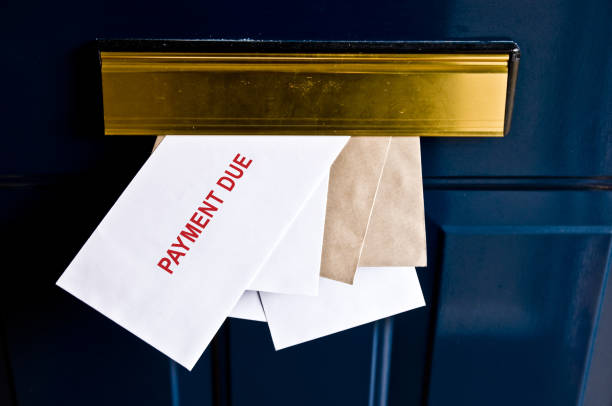 The precarious equilibrium of managing overextended personal debt is a fragile state, entirely dependent on the consistent flow of a steady income. This delicate balance is catastrophically shattered by an income shock—an unexpected and severe disruption in earnings from job loss, a reduction in hours, a medical disability, or the failure of a small business. This event acts not as a mere setback, but as a detonator that exposes the profound vulnerability buried within a leveraged financial life, rapidly triggering a full-blown crisis.The immediate effect is a brutal mathematical shortfall. Where once a budget was strained, there is now an impossible gap between drastically reduced resources and inflexible financial obligations. Minimum payments on credit cards, auto loans, and personal loans suddenly become insurmountable barriers. Essentials like rent and utilities now compete with creditors for scarce dollars. The individual is forced into a series of painful triage decisions, choosing which payments to delay and which relationships to damage, knowing that each missed payment sets in motion a chain of penalties, soaring interest rates, and damage to their credit profile.This financial unraveling is accompanied by a intense psychological toll. The initial anxiety of the income loss itself is quickly eclipsed by the terror of the accelerating debt spiral. The tools that might have offered a buffer—savings, available credit—are often already depleted by the very overextension that defined their pre-shock existence. Feelings of shame and failure can paralyze proactive communication with lenders, allowing the situation to worsen daily. The pressure to find immediate new income sources becomes overwhelming, yet the need to address the growing financial chaos creates a debilitating distraction.An income shock reveals the true nature of overextended debt: it is a risk that is only sustainable in perfect conditions. Without a safety net, the household has no resilience to absorb any economic blow. The path forward requires emergency measures: urgently seeking hardship programs from creditors, exploring all avenues of public assistance, and making drastic reductions in living expenses. Ultimately, recovering from this collision of debt and disaster is a long process of stabilization, one that underscores the critical lesson that true financial security lies not in the ability to manage large payments, but in building the resilience to survive when the income they depend upon suddenly disappears.
The precarious equilibrium of managing overextended personal debt is a fragile state, entirely dependent on the consistent flow of a steady income. This delicate balance is catastrophically shattered by an income shock—an unexpected and severe disruption in earnings from job loss, a reduction in hours, a medical disability, or the failure of a small business. This event acts not as a mere setback, but as a detonator that exposes the profound vulnerability buried within a leveraged financial life, rapidly triggering a full-blown crisis.The immediate effect is a brutal mathematical shortfall. Where once a budget was strained, there is now an impossible gap between drastically reduced resources and inflexible financial obligations. Minimum payments on credit cards, auto loans, and personal loans suddenly become insurmountable barriers. Essentials like rent and utilities now compete with creditors for scarce dollars. The individual is forced into a series of painful triage decisions, choosing which payments to delay and which relationships to damage, knowing that each missed payment sets in motion a chain of penalties, soaring interest rates, and damage to their credit profile.This financial unraveling is accompanied by a intense psychological toll. The initial anxiety of the income loss itself is quickly eclipsed by the terror of the accelerating debt spiral. The tools that might have offered a buffer—savings, available credit—are often already depleted by the very overextension that defined their pre-shock existence. Feelings of shame and failure can paralyze proactive communication with lenders, allowing the situation to worsen daily. The pressure to find immediate new income sources becomes overwhelming, yet the need to address the growing financial chaos creates a debilitating distraction.An income shock reveals the true nature of overextended debt: it is a risk that is only sustainable in perfect conditions. Without a safety net, the household has no resilience to absorb any economic blow. The path forward requires emergency measures: urgently seeking hardship programs from creditors, exploring all avenues of public assistance, and making drastic reductions in living expenses. Ultimately, recovering from this collision of debt and disaster is a long process of stabilization, one that underscores the critical lesson that true financial security lies not in the ability to manage large payments, but in building the resilience to survive when the income they depend upon suddenly disappears.
Absolutely. It provides a sustainable framework for debt repayment by shifting the mindset from "I can't spend on anything" to "I'm choosing to spend on getting out of debt." This makes the process more positive and less psychologically draining, increasing the likelihood of long-term success.
Individuals may not know methods like the debt avalanche (paying high-interest debt first) or snowball (paying small balances first) methods, so they pay debts inefficiently, costing more time and money.
Student loans are often called "good debt" because they are an investment in your future earning potential. However, they are still debt that must be managed. Explore income-driven repayment plans if your federal loan payments are too high, and always prioritize high-interest debt (like credit cards) first.
Focus on rebuilding emergency savings, increasing income through upskilling or side jobs, and working with a credit counselor to create a sustainable debt management plan.
When everyone around us is financing cars, houses, and lifestyles with debt, it becomes socially normalized. This reduces the perceived risk and stigma, making us more likely to follow the herd into overextension without critically evaluating our own financial situation.